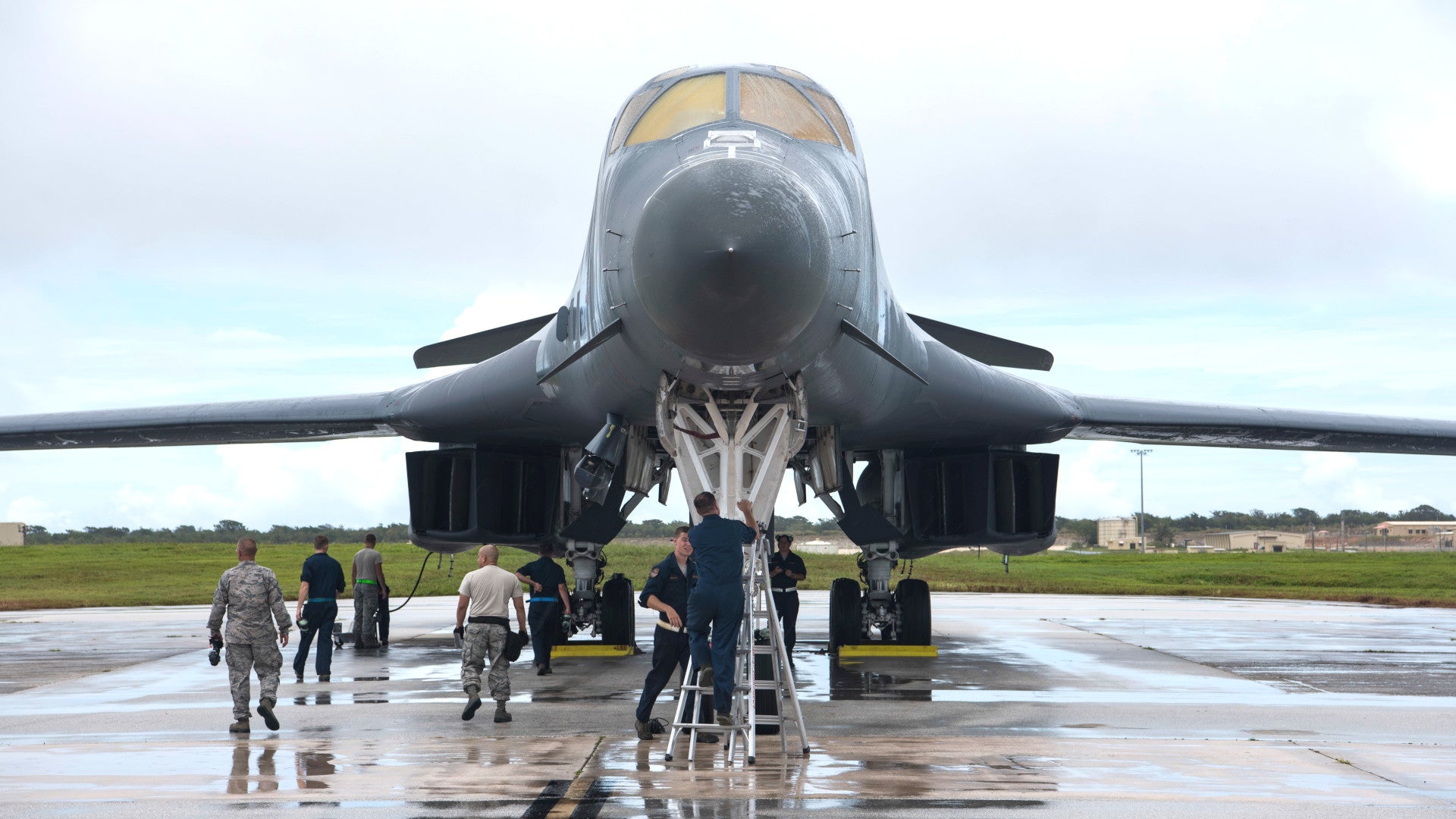The U.S. Air Force has ground its B-1B Bone bomber fleet for the second time in less than a year over problems with the aircraft’s emergency egress system. This is this time has to do with how the drogue parachutes that stabilize the plane’s ejection seats if the crew has to punch out.
Air Force Global Strike Command, which oversees all of the service’s bombers, including the B-1Bs, ordered the “safety stand-down” on Mar. 28, 2019, after uncovering the issue in at least one bomber assigned to an unspecified unit. There is no indication as yet as to how many Bones actually have a problem or how long it be before the fleet get flying again.
This is the full statement from the command on the grounding order:
The Air Force Global Strike Command commander ordered a safety stand-down of the B-1B Lancer fleet March 28.
During a routine inspection of the B-1B drogue chute system, potentially fleet-wide issues were identified with the rigging of the drogue chute. It appears to be a procedural issue and is unrelated to the previous problem with egress system components. As a precautionary measure, the commander directed a holistic inspection of the entire egress system. The safety stand-down will afford maintenance and Aircrew Flight Equipment technicians the necessary time to thoroughly inspect each aircraft. As these inspections are completed and any issues are resolved, aircraft will return to flight.
The safety of Airmen is the command’s top priority and this precautionary step will enable the command to correct any potential issues.
The emergency egress system in the B-1B involves both the Advanced Concept Ejection Seat (ACES) II ejection seats for the crew on board, as well as hatches in the upper fuselage that blow open before the seats send those individuals rocketing out of the aircraft. The drogue chutes help orient the seats after the initially leave the aircraft to prevent dangerous movements that could cause serious injuries or prevent the main parachutes from deploying properly.
The Air Force’s A-10 Warthog, B-2 Spirit, F-15C/D Eagle, F-15E Strike Eagle, F-16 Viper, and F-22 Raptor aircraft all also use the United Technologies Corporation (UTC) seat. We don’t know if the procedure for rigging the drogue parachute on the B-1B, which the Air Force says appears to be the source of the problem, is common across all aircraft with the ACES II.
In June 2018, the Air Force had grounded the B-1Bs after a harrowing in-flight emergency that led to one of the bombers landing with one of the crew members sitting on a live, misfired ACES II. An investigation determined that an improperly crimped part had led to the malfunction in that case. The Air Force lifted that grounding order within weeks, but acknowledged that some aircraft were still potentially flying with faulty ejection seats, something The War Zone was first to report on.

At present, there are no B-1Bs deployed overseas, the Air Force told Military.com reporter Oriana Pawlyk. In April 2018, a number of Bones had deployed to the Middle East to support operations against ISIS in Iraq and Syria. This U.S. military has been scaling this mission back since President Donald Trump declared his intention to withdraw from Syria in December 2018. The United States said that the terrorists no longer controlled any territory as of Mar. 22, 2019, but the group remains active and a serious threat in the region.
The new grounding does come as the Air Force continues to struggle with improving the readiness rates of combat aircraft across the service after years of personnel shortages, constant combat operations, and budgetary issues. The Air Force did say it had finally rectified the shortfall in active duty maintainers in February 2019.
The B-1 fleet is also in the midst of an upgrade program to improve the avionics and other mission systems on the aircraft. This includes installing new digital multifunction displays throughout the cockpit.
We will be sure to update this story with any new information as it emerges.
Contact the author: jtrevithickpr@gmail.com
